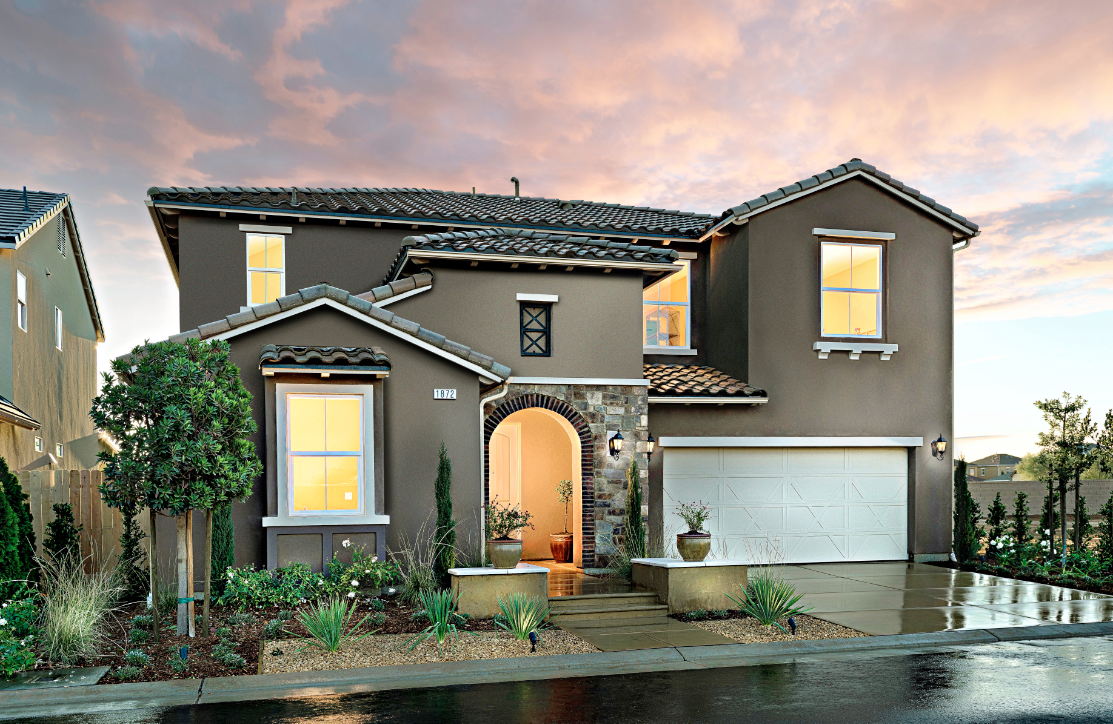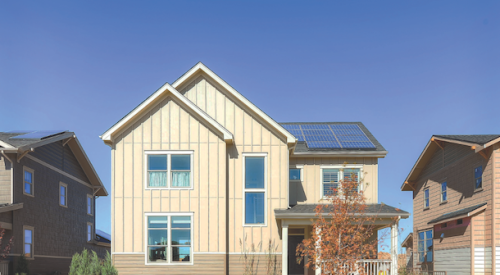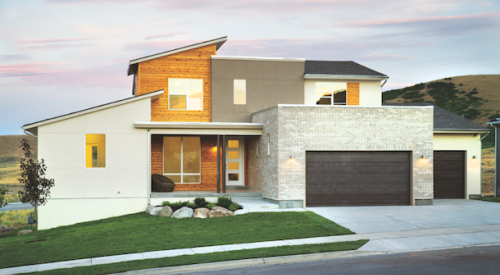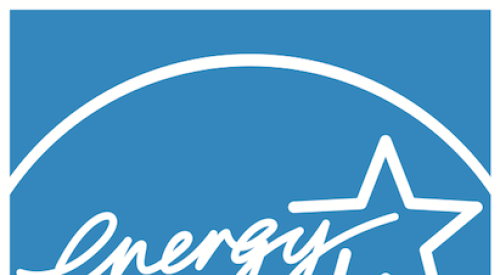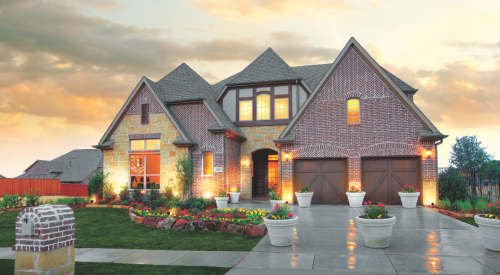This year the state that houses one out of eight Americans enacts a revision of its energy standard—Title 24 of the California Code of Regulations—and challenges local builders with a familiar yet ambitious mandate: By 2020 all new homes in the Golden State will produce as much energy as they consume. The number of structures meeting net-zero energy (NZE) criteria or close to satisfying NZE has multiplied steadily in the U.S. over the last few years, especially in areas such as California where market-based incentive programs and progressive codes encourage renewable-energy generation and advanced construction practices.
No other state can possibly boast the infrastructure necessary to ensure all of its new homes achieve NZE by the end of this decade. Nevertheless, California’s reaffirmed plan for future construction will directly affect more than 38 million U.S. residents (the state’s estimated population as of 2013 per the
Census Bureau) as well as numerous local and national builders (many of which appear in our
Housing Giants rankings). These firms must collaborate with utility companies, consult with building science groups, and conduct test houses to develop thorough awareness and application of energy-efficient design before installing even one solar photovoltaic cell on a roof.
Ideally the national builders in California will embrace the performance upgrades they learn over the next few years and implement each sensible modification in their markets around the country. And local companies outside California will seek out builders in the state through peer networks and one-on-one site visits to acquire valuable knowledge about innovative solutions for constructing energy-efficient homes as code cycles run their course. But the production of better houses often requires builders to reinvent their entire business model.
Fresno-based
Wathen Castanos phased out its existing model homes and engineered new energy-efficient product amid plummeting house values and historic foreclosure spikes in 2007, the same year the
California Energy Commission adopted the goal to reach NZE in all new residences by 2020. The builder became so devoted to energy efficiency that it even changed the company name to Wathen Castanos Hybrid Homes. “We couldn’t unravel from this right now; it’s something that’s been built into our DNA,” says president Mike Nimon, who credits an energy-efficiency platform for successfully battling the resale market and differentiating Wathen Castanos from other companies in the area. “We know we can compete against nationals as well as the local builders with that thinking process.”
Starting blocks
Wathen Castanos Hybrid Homes, Fresno, Calif., developed energy-efficient product in the depths of the housing crash and emerged a market leader.
Before Wathen Castanos could begin constructing energy-efficient homes, the company had to find and embrace the latest information about contemporary building technology. The management team spent countless hours with consulting groups such as
IBACOS trying to grasp key building science insights so executives could educate project superintendents and then train subcontractors. In a sense, Wathen Castanos relearned how to build a house.
“You can be enamored by the idea of [energy efficiency] with how it sells and how you can market it, but you’ve got to start at the guts of it,” says Nimon, who described the acclimation period as a “lobotomy” for the company. If Wathen Castanos failed to explain to its trades how a tighter enclosure necessitates an HVAC system capable of distributing fresh air consistently, for example, the likelihood of condensation forming inside the home escalates. “You can’t just put a couple parts and pieces onto a house,” Nimon adds. “It’s about knowing the science of it.”
Early in the process Wathen Castanos partnered with Dave Hegarty, a certified energy consultant and HERS rater, to determine the most practical elements of a high-performing home as well as to formulate a strategy for maximizing the company’s investment in energy-efficient construction. “We would basically get a recipe of how to build a house from him, and he would give us certain offsets as far as an incentive we would get if we included that particular item as a standard feature,” says Freddie Logue, director of construction and purchasing for Wathen Castanos.
The motivation to engage all company personnel and subcontractors from the outset in learning critical details about building systems reduced the probability Wathen Castanos would commit costly missteps requiring extensive backtracking. Hegarty says he frequently observes builders who hop on the energy-efficiency bandwagon to generate more sales but wonder why their revenue slips once they begin cutting back on essential performance features. Being organized from the start, articulating the company’s vision to each employee and trade, and maintaining a dedication to energy-efficient construction ensures Wathen Castanos remains near the top in sales within all of its markets.
“They bought-in from the start to do it right,” says Hegarty, president of
DuctTesters, a third-party energy consultancy in Ripon, Calif., that aims to erase the disconnect between builders and their subcontractors over Title 24 compliance. “They get everybody to understand and then move forward so there are no mistakes, and that’s why they’re so successful at this.”
Hegarty conducted training sessions for Wathen Castanos in which he walked through a model home with the builder’s trades and described how each system affects other facets of the house as well as its overall quality. In one instance Hegarty covered up all of the outlets and can lights with blue tape and then administered a blower door test. With everyone watching, Hegarty proceeded to remove the tape as a monitor showed the resulting jumps in air leakage, which helped the subcontractors understand how their specific jobs influence the home’s performance.
“If you show them why you’re doing the change and what the benefits are, a lot of times they’ll be on board much faster,” Logue says. Wathen Castanos hosts meetings with its trades to review the company’s construction practices and discuss methods not only to enhance the energy efficiency of new homes but also to make them easier and more economical to build. Eliminating common dead spaces in the builder’s houses, for example, diminished air infiltration and rendered home designs that proved less difficult and less expensive to erect. “A lot of times those things help save trades money, labor, cost, and material besides helping us get a better-performing home,” Logue says.
Ideal Homes in Norman, Okla., employs a similar arrangement to troubleshoot inefficiencies and foster loyalty with its trades. The company invites subcontractors into the office regularly throughout the year to sit down with the production team and examine potential training issues and any problems in the field, such as rising warranty requests. Ideal also tries to compensate trades above the market rate and often will partner with the same subcontractors even if their bids prove to be higher than comparable labor. “We have found that when we make changes, they’re fully behind us,” says Steve Shoemaker, vice president of sales and marketing for Ideal.
Another process the builder developed for trades delineates the jobsite and interaction among different subcontractors. Ideal clearly defines its expectations for each trade and orders all subcontractors to clean up after themselves, which builds respect between trades and contributes to successful projects. “When a trade contractor walks onto our job site, they know exactly what our expectations are—there’s no gray area,” Shoemaker says. “If you don’t treat your trades well, then you can’t expect them to be on board when you make changes or when you start to expect more out of them with their scopes of work and level of detail.”
While many companies might believe swapping out a few products will align their business with the high-performance house market, the intricacy of energy-efficient home design requires the complete reassessment of a builder’s floor plans, training methods, and installation techniques. “Don’t look to hit a home run because there’s not a silver bullet that makes your home more efficient,” Shoemaker says.
High hurdles
Ideal Homes, Norman, Okla., integrates energy-efficient features in its houses as critical pieces of a larger high-performing system.
At least once a year, a builder who has decided to pursue energy-efficient home construction calls on Ideal because of its collaboration with the Department of Energy and its involvement in the agency’s
Building America research program, which offers expert advice and encourages the industry to bring cutting-edge innovations and resources to the residential market. Many of the companies who visit Ideal often assume they need to address only a few aspects of their operation to transform their business into an energy-efficient platform.
“A lot of people are looking for the one big thing you can do or the two or three changes you can make,” says Shoemaker, who emphasizes preparation, instruction, and execution over a reliance on inventive products. “You can have the most efficient insulation in the world, but if it’s not installed properly then it’s not going to be very effective.”
Ideal remains focused on taking advantage of what Shoemaker calls low-hanging fruit—subtle inexpensive adjustments in the builder’s home designs, construction practices, and product selections—to increase the efficiency of houses. The company began using blown-in insulation, for example, to help fill tiny nooks and crannies within wall cavities instead of opting for higher-priced, newer alternatives such as spray foam. But potential buyers touring a model home cannot readily perceive a difference in insulation, so Ideal also makes sure to incorporate energy-efficient features in more visible and accessible elements of the house.
“It’s not sexy or glamorous, but the first place that we look is the window,” says Shoemaker, who likens the builder’s low-e vinyl window to a pair of sunglasses that reflects ultraviolet rays and keeps warm air inside during the winter (and cool air inside during the summer). “It’s something that the buyer can see, touch, and feel—and know the difference.”
The boost in windows and insulation provides an improved building enclosure and supports Ideal’s organizational approach to treat the entire home as a system. A substantial barrier between indoor and outdoor environments dictates the progress of an energy-efficient house and remains the primary concern of the
International Code Council, the group that prescribes building standards such as the International Energy Conservation Code (IECC) for governing bodies around the world. The 2009 edition of the IECC enjoyed overwhelming popularity in the U.S. because federal legislators stipulated funding from the
American Recovery and Reinvestment Act on states ratifying the code. The 2012 IECC established higher verification benchmarks—particularly in regard to air leakage in the building enclosure and ductwork—but the lack of additional federal funding has inhibited most U.S. states from adopting the standard.
The ICC will publish the latest IECC (2015) sometime this year, so many law administrators deliberating advances in building codes likely will be resigned to consider seriously the more stringent 2012 iteration. “It’s definitely going to push builders to a whole new level, and unless they buy in it’s going to be a difficult process, ” says Srikanth Puttagunta, a professional engineer and vice president of building systems for
Steven Winter Associates, a research and consulting firm in Norwalk, Conn. “Because we’re pushing to higher levels of airtightness and efficiency, if you don’t ensure continuity in the thermal, air, vapor, and water barriers, your risk potential is just going through the roof.”
The 2012 IECC mandates a blower door test to confirm a home’s airtightness in addition to the completion of a prescribed checklist. The 2009 edition expected builders to follow the building envelope guidelines but left verification as voluntary; the code also permitted the majority of U.S houses to allow 7 air changes per hour (ACH) at 50 pascals. Maximum air infiltration in the 2012 IECC drops to 5 ACH for homes in milder climates and 3 ACH in colder climates—demanding more scrutiny throughout the construction process—but remains an attainable level of performance for companies as quality insulation installations and other innovative energy-efficiency practices become more common.
Once the house satisfies air infiltration requirements, an open-minded and disciplined HVAC contractor becomes an indispensable asset for builders operating under the 2012 IECC. The 2009 version allowed ductwork to leak 12 cubic feet of air per minute (cfm) per 100 square feet of conditioned floor area, whereas the 2012 edition orders a duct blaster test to ensure duct tightness stays at or below 4 cfm per 100 square feet. “There are definitely experienced contractors that are meeting it, but for the typical HVAC contractor, that’s going to be tough criteria to meet,” Puttagunta says.
Keeping air handlers and ducts within conditioned space contributes to an airtight envelope and makes balancing the HVAC system even more important because a house must be able to breathe by continuously tapping an outside source and distributing fresh air evenly throughout the interior spaces. Ductless mini-split heat pumps have become a feasible option for builders, but many of the units mount only to a wall and lack the aesthetics, mass-market appeal, and proven effectiveness necessary for integrating the product as a standard feature in all new homes. The decision to include these technology upgrades in each new house commands research in consumer preferences and enough product development to assure affordability on a large scale.
KB Home, based in Los Angeles but with communities in 10 different states, satisfies those prerequisites but also monitors the behavior of customers at the company’s retail store, the KB Home Studio, which has locations in each of the builder’s markets. “We introduce a product or technology at the design center on a small scale first so that we can track its popularity with customers and decide whether it goes into the home as standard,” says Jacob Atalla, senior director of sustainability initiatives for KB. “We learn how to prepare our trade partners for it and how to work with the suppliers; we line all of these things up and then move it to a national standard.”
The builder introduced radiant barriers as an option for roofs in the early 2000s and eventually grew the product’s take rate beyond 50 percent after educating consumers about the advantages. KB, which constructs all of its homes to
Energy Star standards, worked with a national supplier for roofing decks to integrate the radiant barrier on the underside of roofs in nearly all markets for nominal cost largely because of the national builder’s buying power. The company learned early on, furthermore, to stress both the monthly savings and long-term benefits of living in a KB house when discussing energy efficiency with potential buyers. “The affordability is in the initial price of the home, but it continues for years after that with a lower total cost of ownership,” Atalla says.
Market homestretch
KB Home uses an EPG label to present the estimated energy costs and savings associated with its new houses.
KB formulated an energy performance guide (EPG) to inform potential buyers of the estimated energy bills they could expect to pay living in one of the builder’s new homes. The EPG label, which Atalla likens to the miles-per-gallon (MPG) sticker on a new car, not only shows the cost of operating a new KB house but also compares its performance with a typical new home and similar floor plan in the same climate zone. “To date there are 250 other builders—national, regional, and smaller builders around the U.S.—that have programs to do something similar,” says Atalla, who cites California’s NZE aspirations as a reason for the company building 11 net-zero and several hundred more near-net-zero energy homes.
The newest home in ZeroHouse 2.0, the latest net-zero energy initiative from KB, debuted in February in Lancaster, Calif. “We actually dubbed it the Double ZeroHouse because not only was it a total net-zero energy home, but it also had a graywater recycling system,” says Atalla, who credits the Energy Star program with preparing the company, its trades, and suppliers for the next cycle of building codes. “Energy Star really is a cornerstone to many of the green building programs, and that’s why we stick with it,” he adds.
Another national builder that constructs all new houses to Energy Star standards, Scottsdale, Ariz.-based
Meritage Homes, elected to jump into energy-efficient construction with both feet about five years ago at the bottom of the market. The company, which builds homes in eight states, resolved to present a unique value proposition in a buyer’s market in which potential customers deemed 20 houses good enough, in the right location, and at the right price point, says C.R. Herro, vice president of energy efficiency for Meritage. “When you’re in that kind of a market as a builder, you’ve got to stand out among the other good enough homes as the better option for those buyers,” he adds.
In 2011 the company pledged to build houses that consume half the energy and water of the average U.S. home and started achieving a HERS score in the low 60s at all price points. Meritage constructed its first test-house targeting net-zero energy for Earth Day three years ago, and the following year the builder began offering a solar option that could bring homes from HERS 60 all the way down to zero. Herro says Meritage remains confident in its ability to construct all new houses to net-zero criteria, but the market lacks the immediate financial benefits for buyers necessary to soften the heightened price tag associated with many energy-efficient homes.
“The challenge is in taking the $100,000s of offset utilities that a net-zero home represents and providing that value to the consumer in a way they understand it,” says Herro, who estimates Meritage spends around 5 percent more per house to incorporate energy-efficient features—a number aided by the builder’s national presence but in the ballpark of figures for other companies. Movements to value high performance in the appraisal process and compensate buyers for lower home-operating costs in mortgage underwriting seek to evolve the financial process but have been unable to gain much traction in legislative bodies.
The SAVE Act, a bipartisan bill reintroduced last year in the Senate, would add the projected energy savings of living in an energy-efficient home to the prospective buyer’s income when factoring a debt-to-income analysis. The lender or appraiser also would have to add the present value of the energy savings (over the lifetime of the loan) to the value of the house when determining the loan-to-value ratio, meaning a home appraised at $250,000 today could be worth tens of thousands more under the SAVE Act. “If we can get those sorts of transactions to demonstrate and quantify the value, then I believe at the current cost of installing solar that net-zero energy becomes a no-brainer,” Herro says.
Understanding that the house works as a system before adding solar enables a builder to identify areas of construction in which upgrades will prove most effective in cost and practice; this big picture thinking also helps explain the benefits to homeowners. “That cumulative effect really significantly changes the total operating costs of a house,” says Herro, who recommends designing the entire home with high performance in mind to curtail expense. “Energy efficiency today has gotten affordable to the point where it costs you more to build to code than to build to an Energy Star level of energy efficiency.”
Meritage carefully considered the raw science of building the ideal home with what the typical buyer would perceive as value when embarking on energy-efficient construction. “That was the first challenge—just to find the balance between how far ahead we could get of the average consumer before we started investing money that didn’t have return on investment,” Herro says. The builder also discovered discussing actual energy-efficient features seldom engaged a potential buyer enough to produce a sale, but relating the benefits of those upgrades to each specific consumer group (e.g., Millennials and Boomers, first-time owners and move-up buyers) further evolved the message and closed more deals. “We really had to learn to talk to the average consumer through their optics,” Herro adds.
Ideal Homes lost three-fourths of its sales team in the mid-1990s when the company adopted an energy-efficient approach and asked staff to sell the builder’s houses based on their performance relative to other homes in the market. “We either fired them or they showed themselves to the door because they didn’t believe in it,” Shoemaker says. “If they don’t believe it, your buyers are not going to believe it.”
Strong finish
Meritage Homes, Scottsdale, Ariz., built its first net-zero test house three years ago and has since offered a solar option for all markets.
A builder who successfully constructs energy-efficient homes and sells them to a diverse clientele must not overlook the principles of marketing new houses and continue to fulfill the traditional desires of buyers. “It doesn’t matter how efficient our home is if we don’t build in the right location—in the school district that you want your 8-year-old to go to,” says Shoemaker, who also refers to floor plans and product mix as essential selling points. “Once we’ve delivered on those basic needs, then we get the ability to truly differentiate ourselves from the other people in the area.”
Shoemaker says he recently drove past two adjacent Ideal neighborhoods and noticed dramatic differences in just the amenities and livability—not to mention home aesthetics and performance—that characterize the future of building. “One has grid streets with rows of houses and the other one has a central park, a walking trail, and a playground,” says Shoemaker, observing a key trend in residential development. “People don’t just live in a house; they live in a neighborhood.”
Energy-efficient home and neighborhood construction distinguishes great builders from good ones and accentuates a spectrum of companies: those who minimize their risk by merely building to code on one end, and those who exceed expectations by investing a little more to produce healthier, durable, and less expensive houses (in the long run) on the other end. The worst-case scenario for a builder, however, would be to find itself trapped between the two extremes, says Meritage’s Herro. “You’ve incurred cost but you haven’t really aligned your business, and you don’t have consistent messaging,” he continues. “You’re kind of caught in the middle ground where you’re not the best home, but you’re also not the cheapest home.”
The continuous drive in areas such as California to enforce progressive building standards and achieve NZE homes or an equivalent in the near future should stimulate meaningful innovations across the country. Builders who take the steps critical for managing energy-efficient construction today position their company to leverage better homes, more sales, and higher market share tomorrow. In most instances, local utility companies will even pay building scientists to visit companies and assist them in attaining homes certified by one of many reputable energy-efficiency programs, which all administer requirements that have been developed and proven in the construction of thousands of U.S. homes, says Herro.
“When these new codes come out, instead of us scrambling trying to figure them out, we’ve already been extracting benefits by selling consumers better homes, and it doesn’t ruffle our business plans or our building cycle at all,” he adds. “It’s not really a choice on whether or not you’re going to build better homes, it’s when you want to do it; you can either get ahead of it and get some value for it, or you can be subject to it as the codes change.” PB




